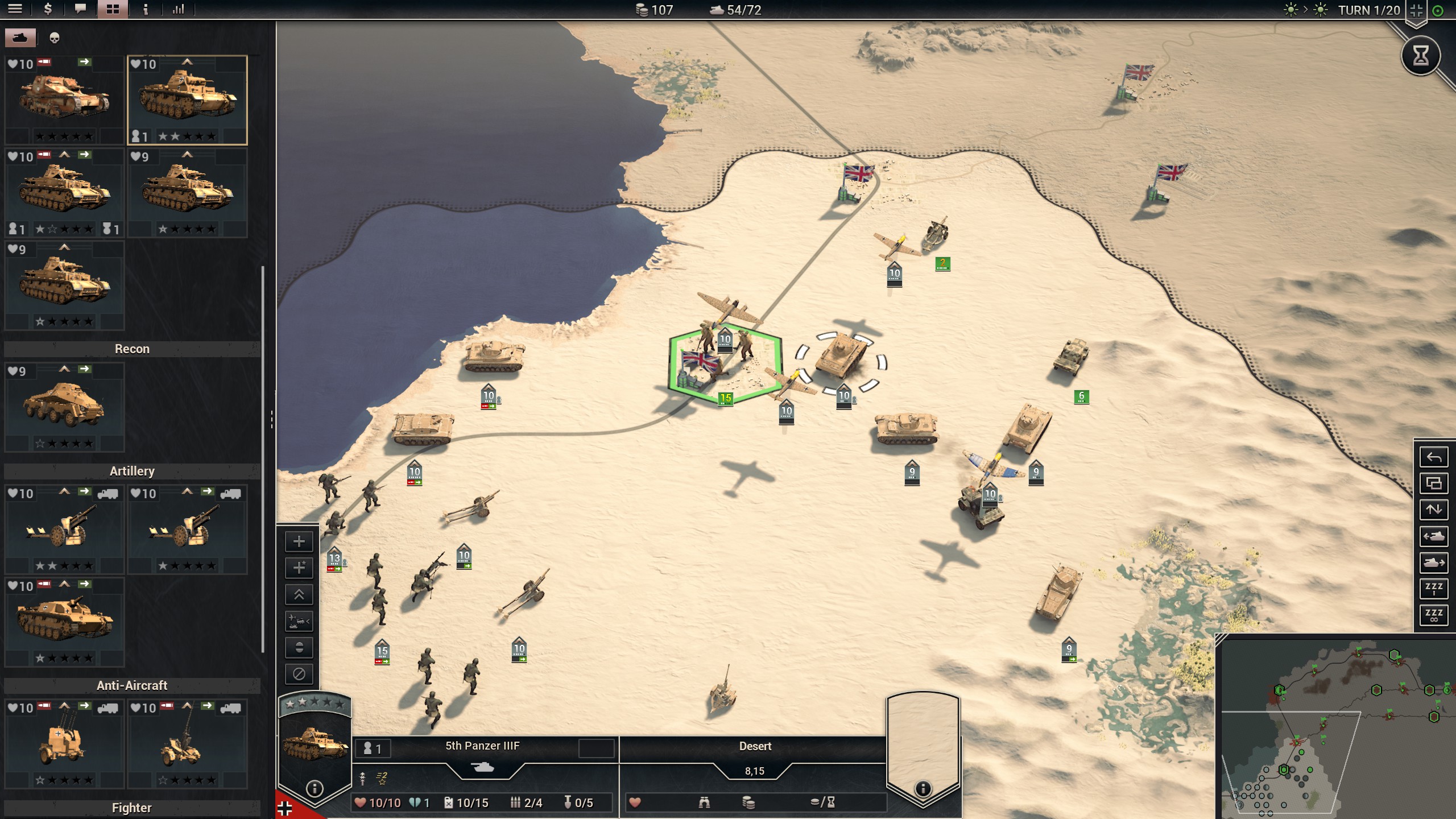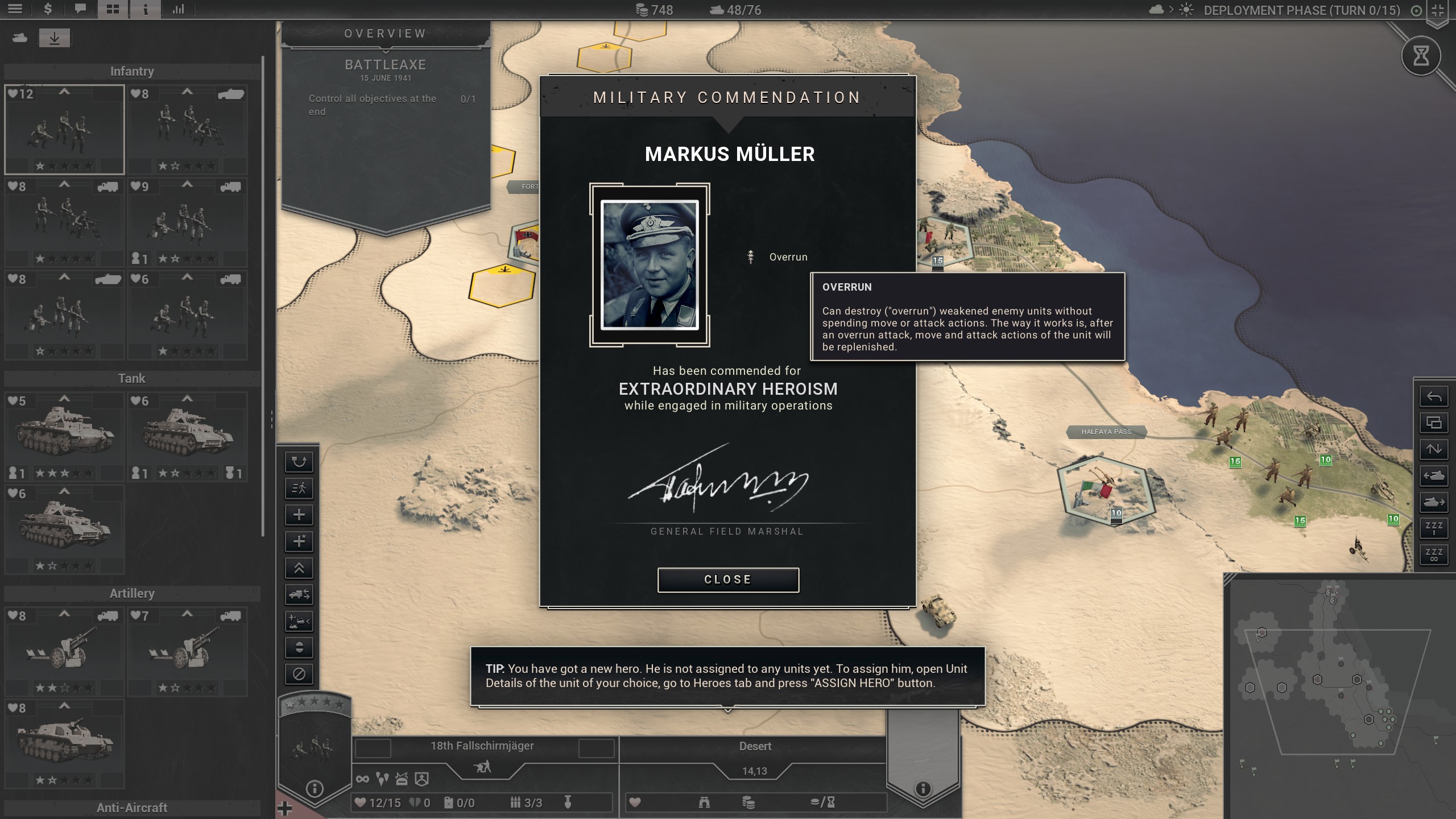What is it? A nitty-gritty hex wargame, but pretty this time.
Expect to pay $40
Developer Flashback Games
Publisher Slitherine
Reviewed on AMD FX-8350, Nvidia GeForce GTX 1070 Ti, 32GB RAM
Multiplayer? Yes, and co-op.
Link Official site
Hex wargaming has never looked as good as Panzer Corps 2. This is the latest in the series of historical wargames that have you take a Panzer division through World War 2 in the single player campaign, or as any of the Axis or Allied powers in competitive and cooperative scenarios. Panzer Corps 2 dedicates more time and effort to looking good than nearly any other game like it, with models and skins to depict near any combination of camouflage and time period there was. It also does superbly with customization, letting you build your own style of play with wholly modular armies and unique general traits, then put them through their paces in branching scenarios.
What it doesn’t do is innovate. Despite a few key improvements, this is the same kind of game that its predecessor was.
Panzer Corps 2 is a game in a tradition that’s nearing 70 years old. It’s a classic hex-and-counter wargame. It has units, the units have stats, you take turns, the stats mash up against each other and somebody wins—or, well, okay, it’s more complex than that. It’s actually very complex. Panzer Corps 2 is a game that knows the difference between PzKpfw IV Ausf. B and E variants, or between combat engineers and grenadiers, and it wants you to both know and care too.

If you do not care to learn your Sturmgeschütz from your Panzerkampfwagen do not panic, but instead turn and move quickly in the opposite direction. This is not really your game, and unlike some other wargames—good games, I must stress—Panzer Corps 2 is not a simple ‘bigger number is better’ situation.
It can suck the fun out of the game at times. Learning and remembering the difference between all of your tank units can be time-consuming, and it can tax the undo button to its limits. Which tank variant is the anti-infantry one, again? Which of these new tank destroyers should I upgrade my outdated unit to use? Will my bomber wing need anti-naval capability in this mission? It takes time. It can feel like a chore when what you’re really playing this game for is interesting, in-depth tactical situations.
It’s also that same attention to history that gives the game life. It’s not clear that there was any need to reinvent the wheel on this genre. The fantasy of leading an army group is here in detail, from dealing with limited requisition of an upcoming model of tank to balancing your limited resources.
You choose specific traits for your commander, like a focus on blitzkrieg tactics or a dedication to infantry maneuvers. I found the “Industry Connections” trait deeply entertaining: it gives you a limited supply of experimental equipment, letting you field test new tanks or guns before they’re generally available. You then take that equipment, and your specialized commander, and put it all through some sixty World War 2 scenarios as the Axis powers, from the invasion of Poland on. There’s some ahistorical ones, too. Take Moscow. Land the Panzers on Long Island. Bomb Washington, DC.

Maneuvering your troops in-mission is engaging and dynamic. You want to capture fixed objectives, and you do that best by maneuver warfare. Surrounding enemies to cut them off from supply is a key tool in your arsenal, but not the only one. I found that key elements of historical strategy—like encirclement—translated brilliantly into the game. I often found that while one objective was an easier target, or simpler to assault, I had conflicting priorities. I needed to divert more than once to capture a new airfield so my planes could keep up. Perhaps If I captured a rail depot, I could get reinforcements to the front more quickly.
The game’s normal difficulty also has a superb undo button for mid-turn mistakes, and the scenarios are pretty friendly to being interrupted. That’s good because some of the longer scenarios are a slog that took me two or three hours to complete, and on harder difficulties a few mistakes can cost you all that work pretty easily. Once, failing to capture Paris after a few hours of painstaking strategy, I just had to get up and walk away for a while.
The infrastructure surrounding the missions is very barebones. Little more than a splash screen separates them. You’re lucky to get a vague one-sentence description of the operation you’ll be expected to carry out as you choose which of the next branches to go down. It’s a fun campaign, but it’s hard to plan when you can’t see the next mission map or check your army composition while you decide.

Panzer Corps 2 is ultimately a fun, robust, and quite pretty wargame. It has a lot to recommend it, but it truly excels in no particular category. Despite all this work it still falls into the complexity-over-substance trap of so many wargames in the past 20 years. Those looking for a strong multiplayer experience are going to be at the whims of the community to elaborate on the handful of maps in the game. It’s dense with rules that can only be explained fully in a manual, though it works very hard at good tooltips, hotkeys, and an accessible user experience. It’s still ultimately unclear or underdeveloped in places that matter.
The campaign mechanics are interesting, but there are copious traps for uninformed players to fall into. Panzer Corps 2 brings the classic turn-based wargame into the new decade—at least in appearance. Ultimately, it’s still the classic turn-based wargame.
